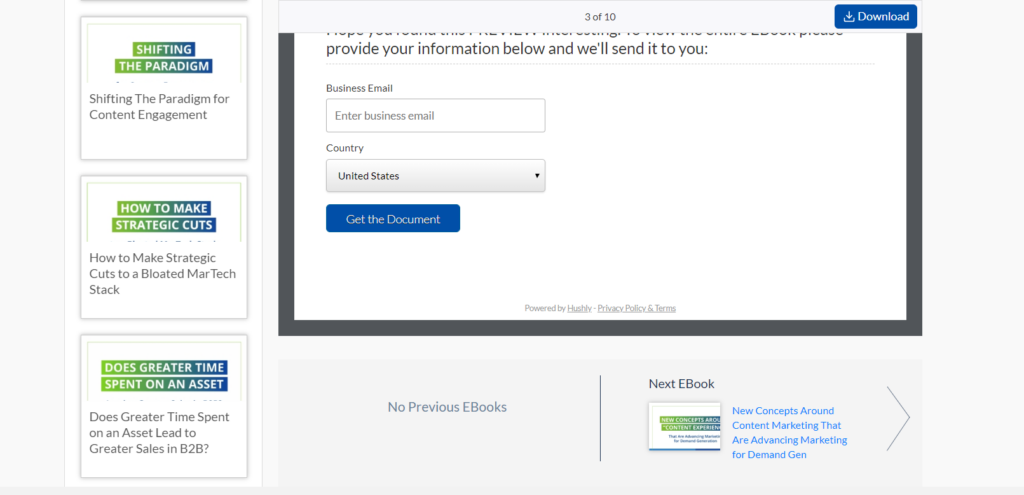If you’re like most B2Bs, you know that personalization is critical for attracting leads and closing sales, but you aren’t sure which tools you need to complete the task.
Which B2B marketing tools are worth the money and which ones will just bloat your budget?
If a tool doesn’t help you collect and access relevant data – that’s a red flag.
If a tool doesn’t improve your relationship with leads – that’s a red flag.
Automation is supposed to make your life easier, not more frustrating.
Consider the tools below to create a user-friendly experience for your leads. Let your website do most of the work and leads will come flowing in.
6 Factors to Consider When Creating Your Stack of B2B Marketing Tools for Personalization
First things first, the most important B2B marketing tools in your arsenal are a mobile-friendly website and lead generation process.
According to Think with Google, B2B buyers spend up to three hours each day conducting research from their smartphones. By 2020, 70% of all business searches will happen on mobile devices.
If your website isn’t optimized for mobile browsing, you’re already losing money and you’ll be losing a lot more very soon.
Your buyers don’t only expect a mobile-friendly experience. They also expect a uniquely personalized experience. Consumer brands like Spotify, Facebook, and Netflix have created an individually personalized and on-demand environment that people have come to expect from brands.
Like expert analyst Brian Solis says, “Business buyers don’t go to work and forget what they do as humans. There’s a new normal that blurs the line between B2B and B2C. They just want things personalized.”
Use B2B marketing tools and strategies to make it happen.
1. First-Party Intent Data
First-party intent data is the fuel behind any successful account-based marketing campaign.
According to Marketing Profs, businesses that run ABM strategies driven 208% more revenue than those that don’t. The key to a successful ABM strategy is relevant, up to date, and accurate data.
Intent data is as close to real-time data as you can get. In the case of first-party intent data, it’s based on the information you’ve collected through a lead’s activity on your website so you can use it to create personalized campaigns immediately.
Personalized strategies based on intent data work because they put you in the mindset of the lead. Since you understand their place in the sales process and why they’re researching your website, you can create the most relevant content for them.
2. Retargeting Campaigns
There’s no way around it: relevant retargeting campaigns are some of your best B2B marketing tools. That is, of course, if you know how to run them properly.
As always, you need accurate data to make these campaigns work. Once you have that, you can target your leads through email and LinkedIn with personalized content.
LinkedIn is an excellent retargeting tool because the platform offers comprehensive audience insights. Not only that, but you can check out which URL a lead visited, plug it into the LinkedIn ad creator tool, and run a targeted ad for LinkedIn users who specifically visited that page.
See why accurate data is the lynchpin here?
3. Triggered Email Marketing Campaigns
Automated email campaigns are surprisingly easy to set up, yet highly personalized, and can deliver excellent results. Triggered campaigns tend to have an average open rate of over 45%.
Just log into your email service provider and create a new campaign. You’ll have the choice to set up an automated email here in most programs.
Look at your website now for some of your best content. Design unique emails that will go out after a lead visits each piece of content on your site.
4. Types of Content
Not every B2B lead wants to read whitepapers and tutorials. 65% want to hear podcasts from you while 49% want to learn about your company through video.
Don’t take an “if we build it, they will come” approach – create the kind of content your leads want.
If you’re running an ABM strategy, it’s more than worthwhile to do some research here. For example, the end-users of your product tend to prefer one type of content on certain subjects while top decision-makers prefer others.
At the end of the day, your personalization strategy runs on high-quality content and data, so these are the best B2B marketing tools at your disposal.
5. Adaptive Content Hubs
Now that you’ve started creating high-quality content, you need to put it all together in one – organized location.
That’s where an adaptive content hub comes into play.
An adaptive content hub is important for a few reasons.
First of all, your leads find it valuable because they’ll be able to educate themselves at their own pace, easily find the information they need on any device, and see that you care about their needs post-purchase.
However, an adaptive content hub is also useful to your personalization strategy because you can use it to collect information about your leads and utilize that data to fuel future campaigns.
For example, a visitor reads one piece of content. The algorithm will monitor what type of content they prefer and continue showing it to them. See how easy it is to collect information like this?

Source: Hushly
6. Exit Intent and Abandonment Strategies
At Hushly, we recommend everyone gets rid of forms completely.
Instead of bombarding users with a form as they try to exit your website, give them more content instead.
They’ll be more likely to stay because you’re actually providing them with something useful instead of asking them to do something for you.
Watch Your Lead Conversions Grow By 51%
At Hushly, we’re all about removing anything that interferes with the lead nurturing process. In most cases, that means getting rid of forms.
Your leads hate them and your marketers hate sifting through the inaccurate data.
Instead, upgrade your B2B marketing tools to include features like self-nurturing landing pages and adaptive content hubs. Back your data up with algorithm checks and human lead verification. From there, you’ll have the data you need to create relevant and valuable personalization strategies for your current and future leads.
Check out an adaptive content hub in action!



